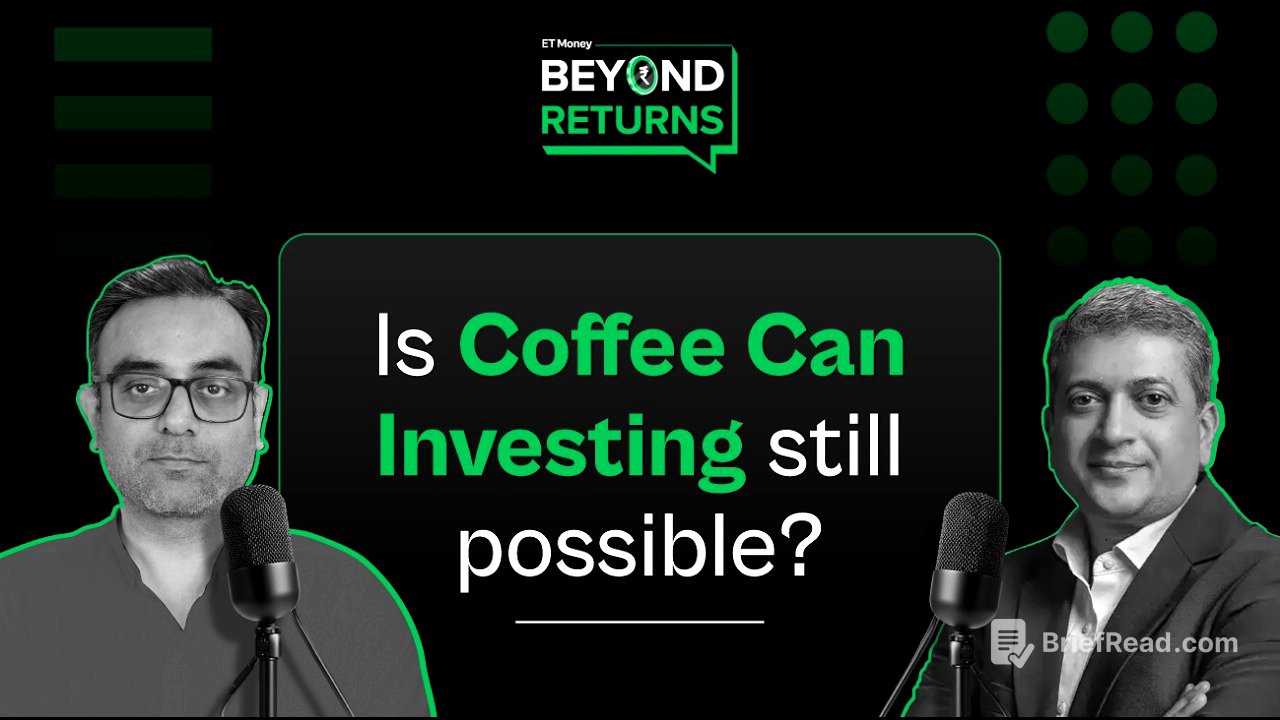TLDR;
This video features a conversation with Anup Maheshwari, co-founder and CIO of 361 assets, discussing the evolving landscape of investment strategies in the face of technological advancements and structural shifts in financial markets. The discussion covers the integration of AI in investment processes, the feasibility of long-term investing, key factors for identifying companies with trillion-dollar potential, and advice for retail investors aiming for long-term success.
- AI integration enhances productivity but requires human oversight.
- Structural shifts include de-dollarization and evolving capital types.
- Long-term investing remains viable with a focus on fundamentals and management quality.
- Key company characteristics include large customer base, strong cash flows, and scalability.
- Retail investors should focus on companies with good economics, durability, and scalability.
Introduction [0:00]
The host introduces Anup Maheshwari, co-founder and CIO of 361 assets, highlighting his extensive experience in the Indian mutual fund industry. The conversation aims to explore the changes in the investment landscape, particularly focusing on the integration of AI, structural shifts in financial markets, and strategies for long-term investing.
How AI is changing the investment process [2:03]
Anup describes how 361 assets integrated AI into their investment process, building upon a foundation of knowledge management established years before AI became prominent. The firm started with weekly "Wednesday sessions" for team analysis, learning, and introspection, which evolved into a comprehensive knowledge management platform called 361 Wiki. AI tools have been integrated to enhance productivity by streamlining data analysis and trend identification, but the human element remains crucial for informed decision-making. The goal is to improve the odds of making correct investment decisions by leveraging AI to process vast amounts of data efficiently.
Structural shifts happening in the financial markets [7:38]
Anup identifies several significant structural shifts in the financial markets, primarily at a global level. These include the increasing discussion around de-dollarization, geopolitical factors influencing economics, and a shift from financialized assets to physical assets. Additionally, the nature of investing has evolved with the rise of quant funds, momentum funds, AI-driven funds, and ETFs, leading to increased market volatility due to their focus on shorter-term signals.
Will Indian markets become efficient faster due to technological advancements? [11:21]
Anup suggests that markets are becoming more efficient in the short run but potentially more inefficient in the long run. The rapid reaction to news and data, driven by various types of funds, leads to exaggerated price movements that may not be relevant from a long-term perspective. This short-term reactivity can create opportunities for long-term investors who can take a contrarian view based on the fundamental business value.
The average holding period for stocks is on the decline [14:30]
Anup acknowledges the trend of declining average holding periods for stocks, influenced by digitalization and shorter company lifespans. While some companies have demonstrated long-term durability, increased competitive intensity and the democratization of businesses through online channels have made it crucial to constantly assess the relevance and sustainability of investments. The focus should be on identifying elements that won't change and ensuring the business offers lasting value to its customers.
Is long-term investing feasible today? [18:16]
Anup affirms the feasibility of long-term investing, emphasizing that fundamental principles remain unchanged. The key is to identify good companies that allocate capital effectively and generate returns for shareholders, while also buying them with a margin of safety. He defines "long-term" mathematically, based on historical data, as a period of at least five years, where the odds of returns exceeding risk improve significantly. The ability of management to navigate volatility is also critical for long-term success.
Mantras for long-term investing [26:45]
The core mantras for long-term investing are sticking to fundamentals like valuations and margins of safety, and having patience. It's more important to read trends than to react to short-term events or data points. Investments should align with the bigger picture and be backed by a management team capable of navigating challenges.
How fund managers take long-term calls [28:57]
Anup uses the example of Bajaj Finance to illustrate how fund managers take long-term calls. He recounts how a shift in management and strategy, focusing on broader consumer finance, transformed the company. Identifying a large addressable market, a capable management team, and favorable economic conditions are crucial for long-term investment decisions. While valuations matter, recognizing the potential for growth and value creation is essential.
Which will be the first $1 trillion company in India? [33:51]
Anup shares the backstory of a discussion about identifying the first trillion-dollar company in India. The approach involves using AI to analyze the characteristics of existing trillion-dollar companies, such as a strong network effect, large customer base, and the ability to expand into adjacent markets. Sectors like telecom and digital consumer businesses are potential candidates, provided they can scale effectively and have the right economics.
Characteristics of companies poised to reach a trillion dollars [37:52]
Anup lists the key characteristics of companies with the potential to reach a trillion-dollar valuation. These include a large existing customer base, strong cash flows, the ability to expand into adjacent markets, and outstanding management quality. Companies that already have a substantial customer base that they can leverage are well-positioned for future growth.
Is Coffee Can investing still relevant? [39:53]
Anup expresses caution about the "coffee can" investing approach of buying and forgetting for decades. While there is value in buying durable businesses, the rapid pace of change and potential for disruption make it challenging to take a 20-25 year view. He suggests that if one were to adopt this approach, it would be best to select companies that are unlikely to be disrupted in their core business.
Steps retail investors can take to succeed as long-term investors [43:47]
Anup advises retail investors to focus on businesses with good economics, durability, and scalability. While retail investors may lack direct access to management, they can still assess a company's fundamentals, scalability, and long-term trends. The key ingredients for success include a good return on capital, capable management, a large addressable market, and the ability to allocate capital effectively for future opportunities.









